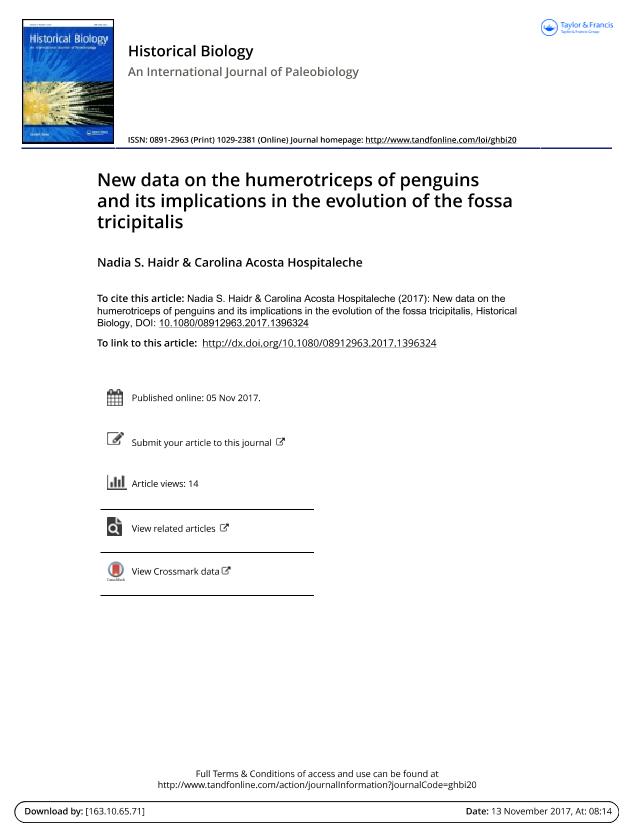Artículo
New data on the humerotriceps of penguins and its implications in the evolution of the fossa tricipitalis
Fecha de publicación:
11/2017
Editorial:
Taylor and Francis Ltd.
Revista:
Historical Biology
ISSN:
0891-2963
e-ISSN:
1029-2381
Idioma:
Inglés
Tipo de recurso:
Artículo publicado
Clasificación temática:
Resumen
A paddle-shaped wing, the general morphology of the humerus, and the muscles involved in wing movement are among the most characteristic adaptations to diving in penguins. Particularly, the humeral fossa tricipitalis and the musculus humerotriceps are clear examples of muscular rearrangement accompanying skeletal changes. In extant Spheniscidae, we were able to identify two heads of this muscle attaching within a different compartment of the bipartite fossa. Since the partition of the fossa appeared as a novelty during the Miocene, we propose that this might have had implications for underwater flight contributing to wing-propelled diving efficiency.
Palabras clave:
Humerus
,
Myology
,
Osteology
,
Spheniscidae
,
Wing-Propelled
Archivos asociados
Licencia
Identificadores
Colecciones
Articulos(CCT - LA PLATA)
Articulos de CTRO.CIENTIFICO TECNOL.CONICET - LA PLATA
Articulos de CTRO.CIENTIFICO TECNOL.CONICET - LA PLATA
Articulos(IBIOMAR)
Articulos de INSTITUTO DE BIOLOGIA DE ORGANISMOS MARINOS
Articulos de INSTITUTO DE BIOLOGIA DE ORGANISMOS MARINOS
Citación
Haidr, Nadia Soledad; Acosta Hospitaleche, Carolina Ileana Alicia; New data on the humerotriceps of penguins and its implications in the evolution of the fossa tricipitalis; Taylor and Francis Ltd.; Historical Biology; 11-2017; 1-4
Compartir
Altmétricas




